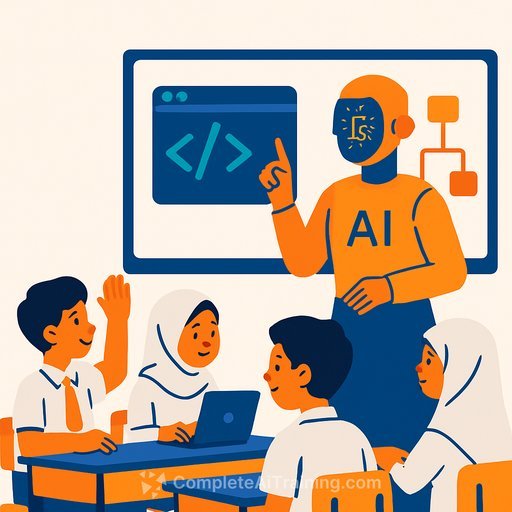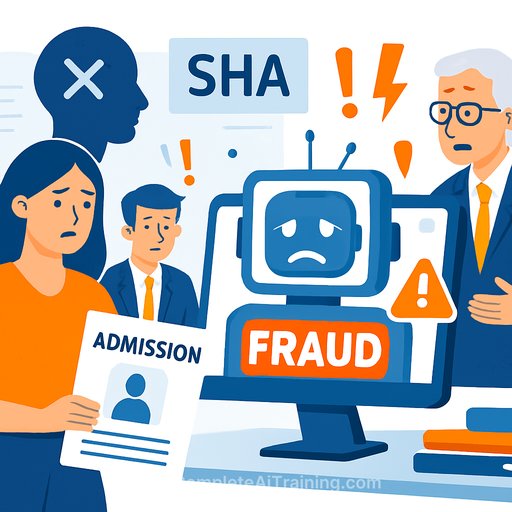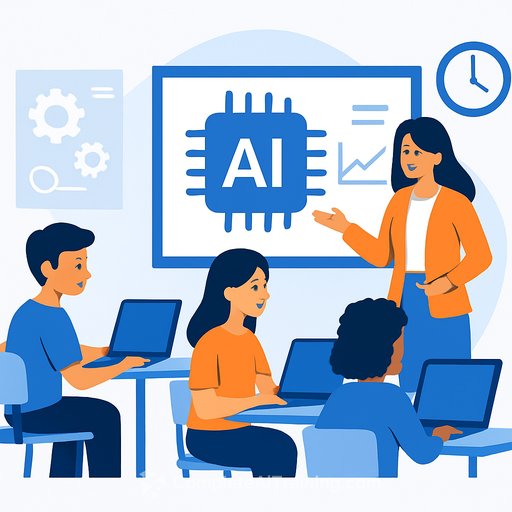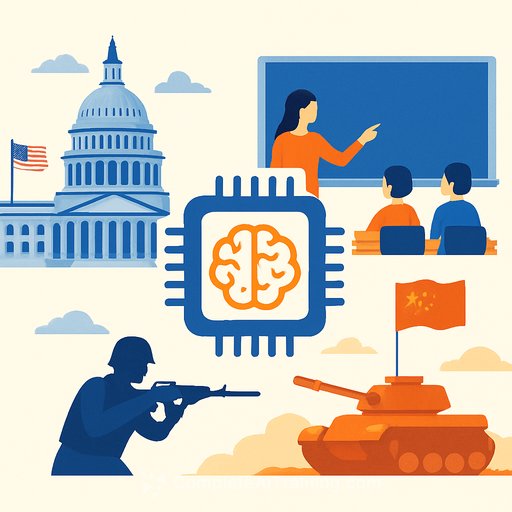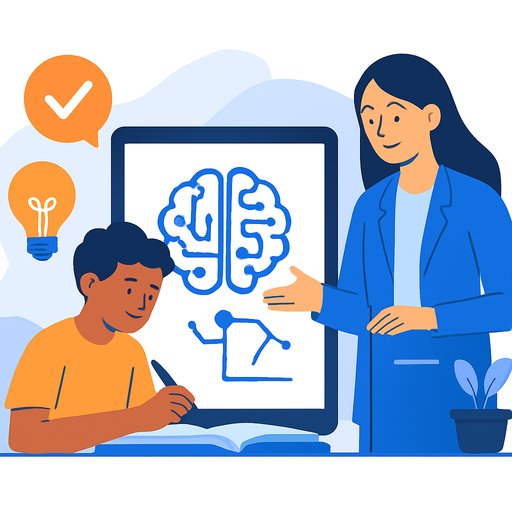Kemendikdasmen Adds Coding and AI as a New Subject: What Educators Should Do Next
Kemendikdasmen is moving coding and artificial intelligence (AI) into a formal subject as part of curriculum transformation. The goal is simple: keep schools aligned with how work and learning are changing.
We're already seeing practical examples. Students at Garuda School in Samarinda, East Kalimantan presented Kalimantan batik motifs guided by AI optimization-culture meets computation in a way students can see and feel.
Why this shift matters
According to Maulani Mega Hapsari, Director of Junior High School at the Ministry of Education and Culture, the education ecosystem must be adaptive and innovative. She also noted a clear upside: AI can trim repetitive admin time for teachers, so more energy goes into teaching and mentoring.
Hetifah Sjaifudian, Chair of Commission X DPR RI, echoed the message. AI is here, and it should strengthen teachers-not replace them.
What AI adds to classrooms
- Richer, more relevant content: faster lesson planning with current examples and local context.
- Personalized learning: differentiated tasks and pacing based on student needs.
- Virtual assistance: extra support for students beyond school hours.
- Automatic feedback: quicker formative checks on quizzes, drafts, and code.
Start here: a 90-day rollout plan
- Weeks 1-3: Plan - Form a small task force, define goals (e.g., teacher time saved, student projects produced), pick pilot grades, and set an ethics/data policy.
- Weeks 4-8: Pilot - Run 1-2 units in selected classes. Track device access, connectivity, and teacher workload. Collect student work samples and feedback.
- Weeks 9-12: Scale - Review results, adjust the scope, and finalize a semester plan. Provide short training for teachers joining the next phase.
Teacher readiness: focus on practical skills
- Digital pedagogy: managing AI-assisted learning without losing human connection.
- Coding basics: variables, control flow, functions, debugging, and code reviews.
- AI literacy: how models work at a high level, prompt quality, bias, and evaluation.
- Assessment with AI: using tools to draft rubrics, generate question banks, and give feedback responsibly.
For structured upskilling, see curated options by job role at Complete AI Training.
Minimum infrastructure and tools
- Connectivity: stable internet in pilot rooms; clear offline fallback (downloaded docs, local code editors).
- Devices: 1:1 is ideal; if not, rotate stations or run pair programming.
- Tool mix: block-based coding (for beginners), Python IDEs, code runners in browsers, and vetted AI assistants with logging turned on.
- Access control: student accounts separated from teacher accounts; content filters and audit trails enabled.
Ethics and safety: set the guardrails early
- Clear rules on what AI can and cannot do for assignments; require students to note AI assistance used.
- Age-appropriate use: restrict tools that collect unnecessary data; use school-managed accounts.
- Bias and fairness: teach students to test outputs with multiple examples and check for cultural sensitivity.
- Academic integrity: combine AI use disclosure, drafts, and oral defenses to validate learning.
For widely accepted principles and policy guidance, review UNESCO's guidance on AI in education: UNESCO AI in Education.
Suggested curriculum map (Merdeka-aligned)
SMP (Grades 7-9)
- Computational thinking: logic, patterns, decomposition, and simple algorithms.
- Block-based coding: build interactive stories, simulations, and simple games.
- Python basics: variables, lists, loops, functions; reading error messages.
- AI literacy: what AI is, training data, bias, prompts, evaluating outputs.
- Project: local-culture app or data story (e.g., batik motifs, local maps) with basic AI support.
SMA/SMK (Grades 10-12)
- Software foundations: Python projects, version control, simple APIs.
- Data skills: collecting, cleaning, visualizing; asking the right questions.
- Intro to ML concepts: classification vs. regression, evaluation at a high level using safe, hosted tools.
- Responsible AI: privacy, consent, bias testing, and documentation.
- Capstone: community-impact project (education, environment, culture, or school operations).
For curriculum alignment resources, check official updates from Kurikulum Kemendikbud.
Assessment that fits coding and AI
- Project-first grading: prioritize working products, clarity of code, and documented decisions.
- Process evidence: version history, prompts used, and short reflections.
- Practical checks: code walkthroughs or quick oral explanations to confirm understanding.
- Rubrics: criteria for problem framing, solution quality, ethics, collaboration, and communication.
Measure what matters
- Teacher time saved on admin and feedback (hours per week).
- Student engagement (attendance, on-time submissions, project completion).
- Quality of outputs (rubric averages, portfolio growth across terms).
- Access indicators (device availability, connectivity uptime, usage logs).
Partnerships amplify results
- Local universities: guest lectures, student mentors, project reviews.
- Industry partners: real briefs, internships, donated devices or cloud credits.
- Community: parents and local leaders co-creating projects rooted in local culture and needs.
Bottom line
Coding and AI as a subject is a practical step forward. Keep the focus on teacher support, ethical use, and projects that connect to students' lives. Start small, measure what works, then scale with confidence.
Your membership also unlocks:

